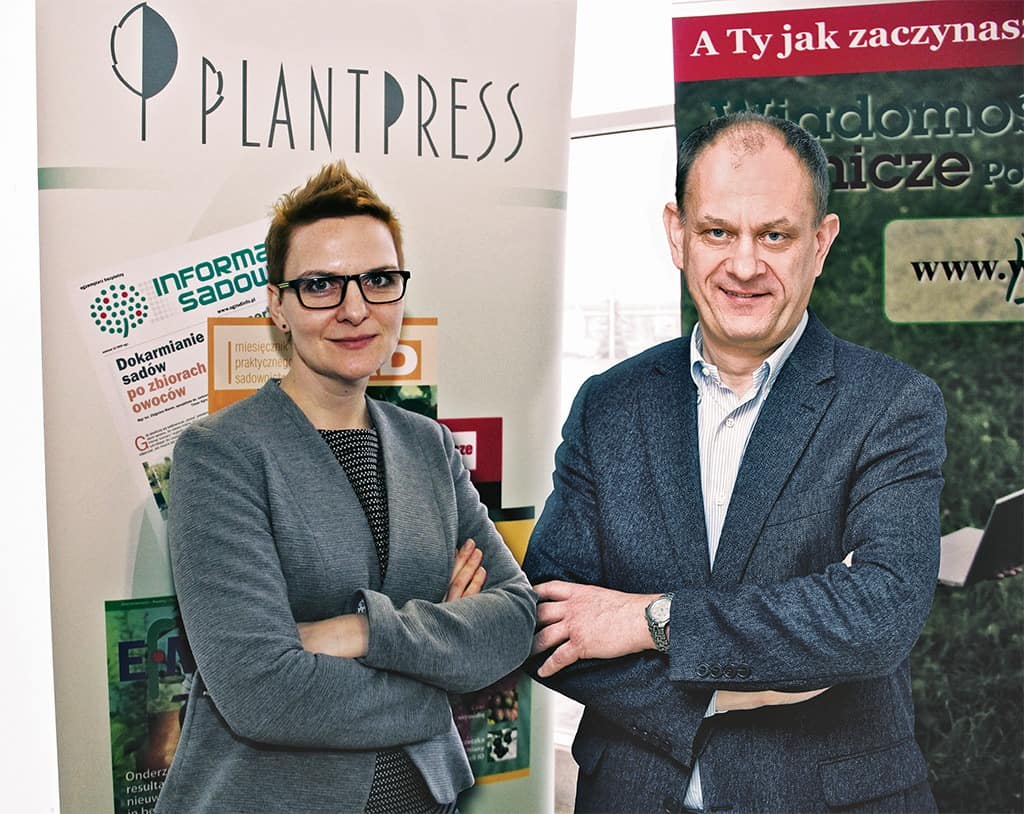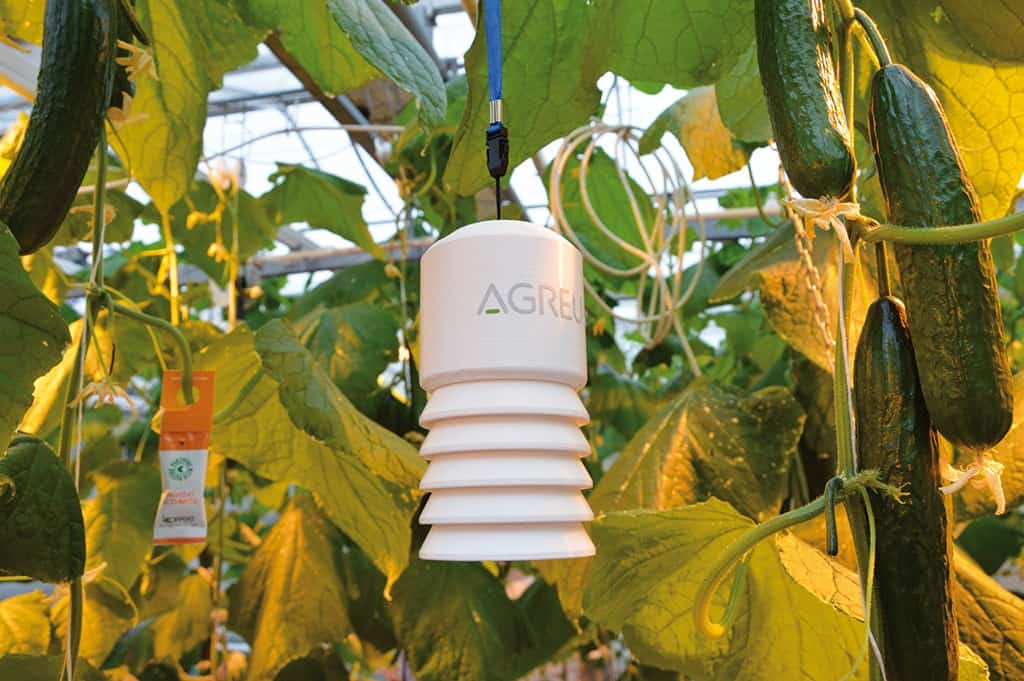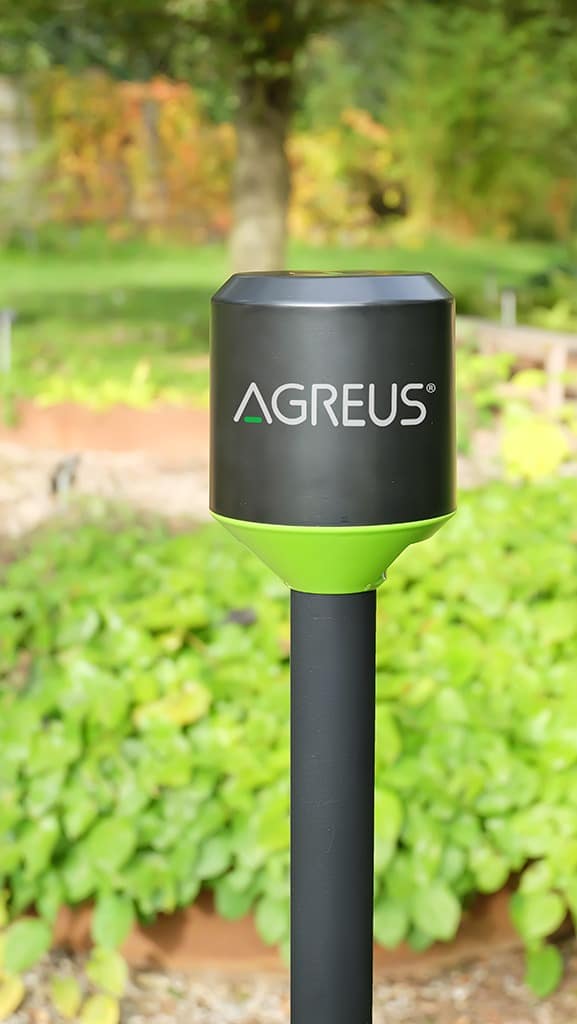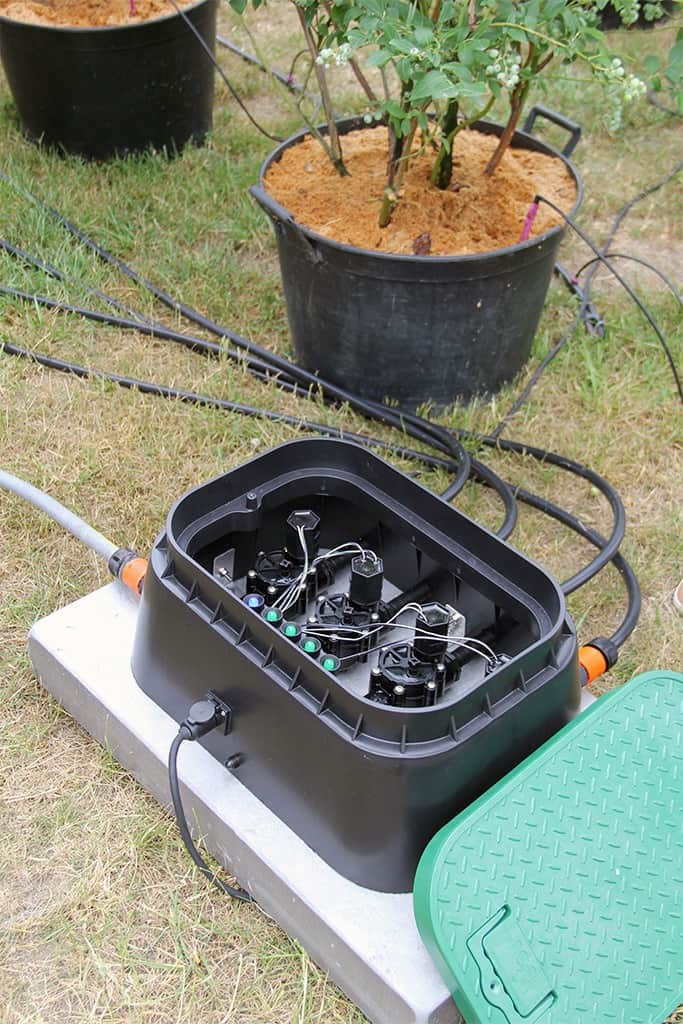In the world of Internet, modern technologies and concepts such as telemetry, LoRa, Farming 4.0, which we do not quite understand, and which from all around „attack” us in descriptions of devices or techniques, one can get lost. The same was true of the modern irrigation systems that are already appearing on the market, and whose operation and service will have to be learned in order not to be left behind. Such systems are introduced by Inventia, which tested them for several seasons in cooperation with the Institute of Horticulture in Skierniewice, in the Irrigation Workshop under the direction of Professor Waldemar Treder.

Interview with President Jerzy Bialousz at the Gardening and Vegetable Trade Fair in Nadarzyn
What is telemetry? Can you explain to growers what it can be used in a horticultural farm?
Jerzy Białousz (Inventia): Telemetry is a concept better known from automation and industrial processes, but it can also be used in modern agriculture. In both cases, it is about remote data acquisition, possibly extended by remote control. What is also important, this acquisition can be carried out without any human intervention, of course after proper preparation and configuration of the necessary equipment.
In agriculture, telemetry gives enormous metering capabilities, unavailable until now, that influence the agrotechnical decisions regarding crop and climate parameters. The extent of cultivation makes it very difficult or even impossible to make frequent manual measurements, so telemetry enabling remote measurements becomes the only reasonable alternative. Only currently acquainted data can be the basis for accurate decisions. Of course, the question remains what data we want to acquire and whether suitable sensors are available. The development of sensors is only a matter of time, while the fact of the possibility of remote data acquisition is such a huge improvement over the current situation that it can be the basis for the creation of various systems based on it. Agriculture is still treated, from the metering point of view, as a backward area. It consists of both the lack of possibilities and the resulting lack of formulating needs. Few solutions are extremely expensive, i.e. beyond the reach of potential users. The use of relatively cheap, universal telemetry in agricultural production is aimed to change this situation, leading to a better knowledge of the ongoing processes, increasing yields and lowering the production costs. This is the way agriculture should be treated.
Can you explain other concepts like the Internet of Things or Agriculture 4.0? These are still new terms for the majority of gardeners…
J.B.: „Agriculture 4.0” is a very informal term created in the similarity to the one functioning since 2011, i.e. the „Industry 4.0” introduced at the Hannover Trade Fair by the Federal Government of Germany. This term means a new trend in contemporary, mutual use of automation, data processing, and exchange as well as manufacturing techniques. Similarly, the term „Agriculture 4.0”, although not officially introduced, means the same integration of digital technologies, but for the needs of agriculture. This is a clear reference to the current stage of the Fourth Industrial Revolution, whose benefits and the resulting benefits should have an impact on the development and increase of agricultural production efficiency as well.
The term „Smart Farming” or „Precision Agriculture” is probably better than the term „Farming 4.0”. Under these names are all solutions, both hardware and software, aimed at increasing the efficiency of agricultural production while reducing its costs, reducing the involvement of the human factor and facilitating the necessary supervision. Personally, I am closer to these terms than to „Agriculture 4.0”, because they refer to the significant advantages of solutions that give tangible results.
As for the term Internet of Things, also hiding under the Englishlanguage acronym IoT, it mainly refers to the hardware layer of the issues discussed previously. However, this term is very wide and includes more and more technologies and related services that are supposed to open completely new horizons of our digital life, enabling the creation of previously unavailable services. As you can see, both Farming 4.0, as well as Smart Farming, or the Internet of Things, refer to the same inevitable sphere if we want to think about progress and the digitization of work and everyday life.
In addition, what is LoRa, because with this concept you can also often meet in the context of „transport” of various data?
J.B .: LoRa is one of the latest technologies enabling wireless data transmission over long distances. The term „long” is of course relative, but in this case, we deal with point-to-point data transmission. Therefore, we cannot compare the scope of this technology with, for example, ubiquitous GSM technology, because in the latter case we are dealing with a transmission system created by his operator. Practically LoRa has, depending on the terrain conditions, a range of a few to a dozen or so kilometers, which is enough for the planned applications. An undoubted advantage of this technology is its low energy demand. This translates into the possibility of creating remote, wireless, sensors or executive modules, which can work with minimal energy expenditure, and therefore can be powered by battery or solar cell. This is especially important in agriculture, where field scattering is high and the availability of power sources is limited. Wireless systems also make it easier to create mobile solutions, that is, requiring frequent change of location, which would be impossible if it would involve the need to change the position of the routed cables.

What features (capabilities) has the Agreus system presented by your company?
J.B.: The Agreus system is our answer to the growing demand of the agricultural market in the area of obtaining data necessary to manage crop management. For years, we have been dealing with professional telemetry for applications in industrial automation. The Agreus system means transferring our knowledge and experience in a new direction. It means a new, dynamically growing market. It is difficult to talk about the functionality of the Agreus system, because by definition this system, as an open system, is to measure and automate all spheres related to agricultural production. It is easier to describe the functionalities with which we want to introduce this system to the market, or what we will offer at the beginning.
What parameters can be monitored using this system?
J.B.: The world in which we live knows only two types of measurement quantities – binary or analog. We do not think about it on a daily basis, but it is just that something is either 0/1, e.g. closed/open, or continuous values from a range, e.g. temperature. This greatly facilitates the creation of telemetry systems, because we only have two types of quantities to send, although the interpretations of individual readings may vary. The limitation is, however, to have the right sensors for the needs, and here we also see our role as a company offering solutions tailored to the needs of agriculture. We already have some of the products, others are in development, but we know that it is a continuous process, largely stimulated by the needs of the market. Using the reference to familiar things, Agreus is the „Lego” for Smart Farming. All the blocks fit together, you can build various solutions, and in the offer, there are still new opportunities stimulated by the needs of the market.
Will the main function of the system be irrigation, or are you planning to develop other functions?
J.B.: Initially, the Agreus system will be focused on the precise irrigation and this will limit its functionality. To be able to irrigate precisely, that is, according to the needs of cultivated plants, we need to know the weather conditions at the place of cultivation or to monitor the soil moisture at which these crops are grown. Therefore, one of the first sensors will be a wireless profile sensor to determine the humidity, temperature, and EC of soil, which may be the basis for the decision to carry out irrigation. The control of the irrigation itself will also be remote, without the necessity of laying control cables. It regards both the systems supplied with 24 VAC and systems with a battery (9 VDC) or solar power supply. The pressure and the amount of used water will be measured as well, which will give us a picture of the effectiveness of the irrigation. In conclusion, in the first stage, the Agreus system will enable us to create a control for a well-metered irrigation system with a full, historical picture of the activities. On the one hand, this will allow you to optimize water consumption, and on the other hand, will give the base for inference for the future. However, as I said, this is not the end. The assumption of the Agreus system is its openness to the users’ needs and we will strive to satisfy them.
How is the system being built in practice and does its components vary depending on the needs of the farm?
J.B.: Because we are dealing with a professional system, as in any such case, its creation must be subject to design processes, carried out preferably by a specialized company. Of course, it is also possible to create yourself your own system, but in any case, we must first determine what we really expect, or how it is supposed to work. Of course, this leads to the fact that each user will have a different customized configuration. Agreus is prepared for it because it is freely configurable as long as the basic requirements are met. This is the system that allows you to create an optimal configuration with the possibility of expanding it if needed. There are also no territorial restrictions if only we are within the working range of used technologies: LoRa and GSM.

Do I understand correctly that the system can be managed without leaving home using mobile devices, such as mobile phones or tablets?
J.B.: Yes, of course. So far, we have not mentioned a very important element of the system, which is the internet portal. The Agreus portal is a cloudbased internet application that allows you to collect and visualize sensor data and to manage irrigation. Irrigation is carried out according to the schedules established on the portal directly from the Base Station installed on the farm, and being the central point of each system. It provides communication between the sensor and executive modules and the portal cloud. Because the Agreus portal is available to users with an open Internet account, access to it is territorially unlimited from any device with an Internet browser. Additionally, for the Android users, and soon for those who have chosen the Apple solutions, an application of slightly different functionalities, which are characteristic for mobile devices, will be useful. This is not the time and place to calculate all the advantages of the solution we have applied. The most important is that, as you said in your question, we do not have to leave the house or return from holidays to find out how our farm works and whether our crops are safe. Yes, the achievement of maximum crop safety is the primary purpose of the Agreus system.

On which farms do you recommend installing the system? Is it only in the largest ones, or also where the plots are, for example, scattered and there are difficulties with access and manual control of devices?
J.B.: Probably initially, the Agreus system will be used in relatively large and modern farms. However, I hope and with this thought it was created, that also smaller farms recognize its usefulness in everyday work. The system has no restrictions upwards or downwards. It can be a single soil moisture probe or one wireless module for controlling valves or lighting the area. The only condition is to have the Agreus System Base Station, i.e. the heart of the hardware solution. Subsequent measuring or executive modules will simply be added to it.
The use of the system on distant plots without daily or frequent supervision is a perfect example of their capability. Because in the base station we combine LoRa with GSM technologies, while the range of any GSM network is available on a remote plot, it is possible to install the system even where there is no permanent power source available. Solar technologies provide us with relief, allowing us to supply both the Base Station and the solar modules themselves. It is the energy source being sufficiently effective to enable proper operation of the devices. Moreover, when the system is already installed, we gain the possibility of remote supervision and control regardless of the distance and location of the plot or object, because it must be strongly emphasized that the Agreus is not only irrigation but also many, many other possible functionalities and applications.
We already know all the advantages of the Agreus system. Is it possible to calculate system costs in a transparent way?
J.B.: I would not like to reveal all the details yet, because the full commercialization of the Agreus System is planned for the second quarter of 2019, but we can already talk about the model in which it will be sold. The basic elements of the system will constitute an offer of our or our Partners, while the use of the System, i.e. the use of the Agreus portal, will be paid in the subscription cycle, probably on a one-year basis. All additional services will also be available in the subscription option, and technical support will be obtained at the place of System purchase on terms agreed with the seller.
As for the prices themselves, we anticipate a level that allows you to get a return on investment as soon as possible. Obtaining direct savings and convenience of use is the basic goal of using the Agreus system, so the price of the solution should be adequate to its capabilities. We also intend to create the possibility of sharing data with agricultural advisors cooperating with us and with our clients. I think that it can significantly improve the quality and speed of their services based on widely available and always up-todate environmental data.
Thank you for the interview,
Dorota Łabanowska-Bury.
Material prepared for the needs of Plantpress Ltd. Publishing house for publication in the periodicals „Truskawka, Malina, Jagody”, „Warzywa”, „Hasło Ogrodnicze” and „Miesięcznik Praktycznego Sadownictwa SAD”. The article is the property of the Plantpress company with its registered office in Krakow (copying, reproduction in parts or in full without the consent of the owner is prohibited).
